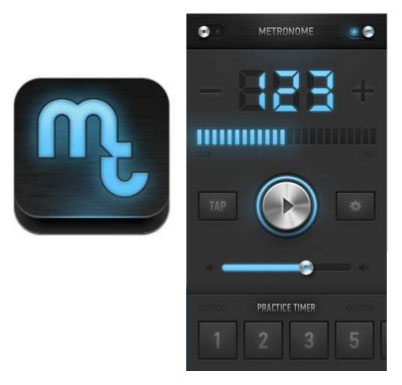In this guitar lesson we’re going to talk about how you can use a countdown timer as a guitar practice tool.
As a guitar player you’re going to find there will be certain things you have to practice that can be quite boring or dull requiring many repetitions and you have to work through them to develop to the next level of playing.
So for example as a beginner you might struggle changing between particular chords. So say a G chord to a C chord and getting the hand to twist correctly with the fingers moving as a group. Developing this change will take a lot of repetition and a concentrated movement of the fingers requiring you to do this hundreds of times which can be a very dull exercise.
To help ensure you practice this every day and spend quality time you can use a countdown timer. This is included on a smartphone such as an iPhone. So you can use the timer like the one I have here where I’ve set it for five minutes to run for five minutes. Your exercise would be to work on changing from G to C getting your fingers all lined up correctly, moving backwards and forwards doing just that and nothing else for five minutes into your timer it goes off. If you can do that every day for five minutes after a week or two that will actually begin to connect the chords and be nice and smooth. So you’re spending quality time not being distracted or giving up after 30 seconds.
Or as an advanced player you can practice something such as playing major scales in thirds (or any other scales) which are a great way to develop coordination and improvising skills. So for example something like this. Here is G Major in third steps. So you could be practicing that with your timer running for five minutes until you get that coordination and fingering down really smooth. Then once you have that operating you can also try it with a metronome.
You can also do this with arpeggio exercises or any other fiddly chord changes you need to work on. Just running for five minutes or even longer will help you to develop a difficult concept until that timer runs out. It saves you getting distracted and giving up too early on a particular exercise.

Another great timer based tool you can use for practice is a metronome with a built in timer. There’s a free metronome app called Metro Timer. Down the bottom of the app we have a bunch of numbers – one two three and five. Each of these numbers represents at a time. So 1 minute for minute, three minutes, five minutes etc. What you can do is set your BPM (Beats Per Minute) to whatever it might be and hit the three minute button. Now you can see that I have a countdown going so this 122 beats per minute click will go for three minutes as it’s counting down. So if I want to say practice something simple like the scale you can basically practice this with a metronome for three minutes. Or you might be improvising around or practicing strumming pattern with that metronome beat for three minutes.
So then you’re developing timing with whatever you’re doing whether its chords or scales but you also got a clock running against that exercise. So it might be three minutes, five or 10 and that’s a good way of being disciplined with using your time effectively.
So there are two simple ways of showing you how to use a timer. One just a simple countdown time to work on free time exercises of chord changes or scales arpeggios anything like that. Then the other one is using the Metro Timer app which has a timer built into it with the metronome so it will click at whatever BPM you set it for for how many minutes you want it to go whether it be two minutes or five or 10 or whatever. So it’s a great way of developing disciplined practice habits setting your time to be used effectively within practice.
